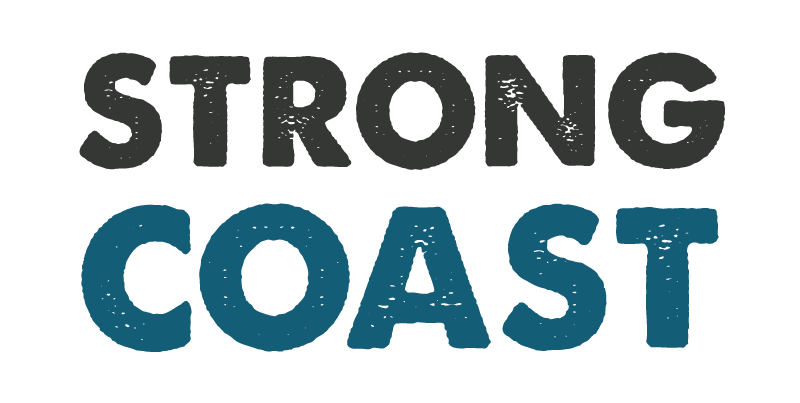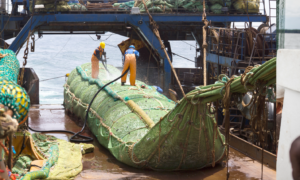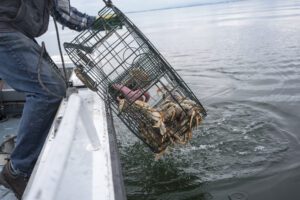A devastating ship collision in the North Sea this week has sparked renewed warnings about the dangers of transporting fossil fuels by sea—warnings that resonate deeply in British Columbia, where historical oil spills have left scars on both marine ecosystems and coastal communities.
On March 10th, a Portugal-flagged cargo vessel, the Solong, collided with the MV Stena Immaculate, an oil tanker transporting jet fuel for the US military. The crash set both vessels ablaze and unleashed an undetermined amount of jet fuel into sensitive marine waters off the coast of East Yorkshire, England.
While emergency crews rescued most of the 37 people on board both ships, one crew member remains missing and has been presumed lost. Meanwhile, as flames continued to burn into Tuesday March 11th, environmental groups and local communities braced for the full extent of what many are already calling an “environmental tragedy.”
Toxic Jet Fuel Threatens Marine Life in Protected Areas
The Stena Immaculate was partially laden with an estimated 140,000 barrels of jet fuel, a kerosene-based petroleum product with a high boiling point that evaporates slowly.
“We are now seeing toxic oil pouring from the 183 metre-long tanker into—or very near—a sensitive area designated to protect declining harbour porpoises,” said Hugo Tagholm, executive director of Oceana UK, in an interview with Euronews Green. “As these animals are forced to come to the surface to breathe, they risk inhaling poisonous fumes and choking on oil.”
“Local livelihoods could well be threatened in the North East, since oil contamination can impact commercial fish populations, along with the shellfish industry, in addition to the potential impacts on human health.”
Hugo Tagholm, executive director of Oceana UK
The collision occurred near two marine protected areas (MPAs): the Southern North Sea MPA, home to harbour porpoises, and the Holderness Offshore MPA, which safeguards critical seafloor habitats. Both zones host diverse wildlife, including half a million seabirds that nest on the nearby cliffs at RSPB Bempton, one of England’s most important seabird colonies.
“This tragic event shows once again that spills occur everywhere Big Oil goes, be it drilling the ocean floor or transporting fossil fuels around the world,” Tagholm added. “Local livelihoods could well be threatened in the North East, since oil contamination can impact commercial fish populations, along with the shellfish industry, in addition to the potential impacts on human health.”
BC’s History of Oil Spills: A Sobering Reminder
For British Columbians, these events are chillingly familiar. In 1988, the Nestucca oil spill released an estimated 875,000 litres of bunker fuel near Grays Harbor, Washington. Carried north by ocean currents, the spill blackened beaches along Vancouver Island and the BC coast. The toll was catastrophic: an estimated 56,000 seabirds died. Sea otters and harbour seals were also affected, as were shellfish beds that sustained Indigenous communities and coastal economies.
Just a year later, in 1989, the Exxon Valdez oil spill devastated Alaska’s Prince William Sound, releasing nearly 42 million litres of crude oil into the marine environment. The spill killed approximately 250,000 seabirds, 2,800 sea otters (around 40% of the sea otter population in the area), 300 harbour seals, 250 bald eagles, and up to 22 killer whales, and the long-term environmental impacts are still being felt more than three decades later. The disaster served as a global wake-up call, highlighting the vulnerability of coastal ecosystems to oil spills and the lasting damage they inflict.
More recently, in 2006, BC witnessed another major spill when the Queen of the North ferry sank off Gil Island in the Great Bear Rainforest. It leaked more than 240,000 litres of diesel and lubricants into waters home to humpback whales, orcas, sea lions, and Pacific salmon. Diesel contamination poisoned salmon runs and herring spawning grounds, causing ripple effects through the food chain. Local communities, who rely on marine life for food, culture, and economy, were left to grapple with lasting damage.
Even the comparatively small 2015 spill from the MV Marathassa in Vancouver’s English Bay—just 2,700 litres of bunker fuel—resulted in widespread environmental harm. Beaches were closed, dozens of seabirds were found coated in oil, and herring and other fish stocks in the area suffered. Environmental assessments conducted after the spill noted that elevated polycyclic aromatic hydrocarbon (PAH) levels were detected in some intertidal sediment samples.
What an Oil Spill Would Mean for BC’s Marine Life and Coastal Communities
If a spill on the scale of the North Sea disaster occurred on BC’s coast today, the consequences would be devastating. Critically endangered southern resident killer whales are already under intense pressure from noise pollution, declining salmon stocks, and chemical contaminants. An oil spill in BC’s waters could push this vulnerable species past the point of no return. The whales rely on healthy Chinook salmon populations, which would be devastated by oil contamination. Spilled oil can smother fish eggs and larvae, leading to reproductive failure and population collapse for years.
BC’s cold, nutrient-rich waters also support vast kelp forests and ancient glass sponge reefs—ecosystems found nowhere else on Earth. These habitats are nursery grounds for species such as rockfish, prawns, and herring. Oil spills smother sponges and kelp, disrupting the oxygen flow and light penetration necessary for marine life to thrive. These slow-growing sponges and delicate kelp habitats could take decades, if not centuries, to recover.
Coastal shellfish industries, many operated by Indigenous communities, are also at grave risk. Shellfish like clams, mussels, and oysters are filter feeders that absorb toxins from the water, making them particularly vulnerable during spills. After the Nestucca spill, commercial and traditional shellfish harvesting was closed for extended periods. In the event of a major spill today, BC’s multi-million-dollar aquaculture and wild shellfish fisheries could collapse, with cultural and economic consequences for First Nations and coastal residents.




